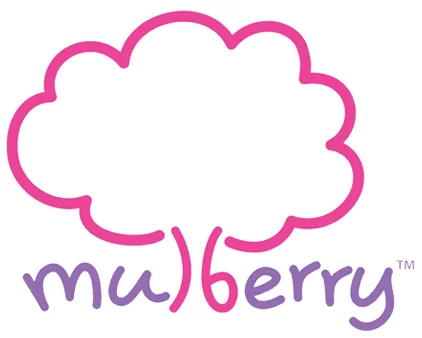5 Ways to Communicate with Your Preschooler During a Tantrum
5 Ways to Communicate with Your Preschooler During a Tantrum
Dealing with a preschooler’s tantrum can be one of the most challenging aspects of parenting. These emotional outbursts are not only difficult to manage but also require a great deal of patience and understanding. Effective communication with preschoolers during such moments is crucial for their emotional and cognitive development.
In this guide, we will explore five practical tips to help parents communicate effectively with their children during a tantrum. These strategies will focus on active listening, using simple and clear language, validating emotions, distraction and redirection, and maintaining calm and composure.

1. Active Listening
Active listening is a fundamental aspect of communication with preschoolers. It involves truly hearing what your child is expressing, both verbally and non-verbally. This approach helps children feel understood and valued, which can significantly reduce the intensity of a tantrum.
Steps to Active Listening:
Get Down to Their Level: Physically lowering yourself to your child’s level can make them feel more connected and less intimidated. When you are at their eye level, it shows that you are giving them your full attention and respect.
Maintain Eye Contact: Engaging in eye contact shows that you are paying attention and care about what they are saying. It signals that you are fully present in the moment with them.
Acknowledge Their Feelings: Use nods and affirmative sounds to show that you are listening and understanding their emotions. Phrases like “I see” and “I understand” can be very reassuring for a child.
Situation 1
Child: “I want that toy now!”
Parent: “I see you’re really upset because you want the toy. Let’s talk about it. Can you tell me more about why you want it right now?”
Situation 2
Child: “I don’t want to eat my vegetables!”
Parent: “I understand you’re frustrated because you don’t like vegetables. Can you tell me what it is about them that you don’t like?”
Benefits:
Active listening enhances preschool language skills and builds trust between the parent and the child. It also helps in defusing the tantrum by making the child feel heard and understood. By actively listening, you are showing your child that their feelings matter and that you are there to support them. This approach is the essence of effective parenting communication.
2. Use Simple and Clear Language
Preschoolers have limited language skills, and complex words or long sentences can confuse them. Using simple and clear language ensures that they understand you, which can help in calming them down.
Steps to Using Simple and Clear Language:
Keep Sentences Short: Use short, clear sentences that are easy for your child to understand. This helps in reducing misunderstandings and keeps communication straightforward.
Avoid Complex Words: Stick to words that are familiar to your child. Avoiding jargon and complicated language ensures that your child can follow what you are saying.
Use a Calm Tone: A steady and calm tone can help soothe your child. The way you say something can be just as important as what you say.
Situation 1
Child: “I don’t want to go to bed!”
Parent: “I know you don’t want to go to bed. But it’s bedtime now. Let’s read a story together first, okay?”
Situation 2
Child: “I want more sweets!”
Parent: “We can’t have more sweets right now. How about we have some fruit instead? It’s sweet and healthy.”
Benefits:
Using simple and clear language is a key aspect of effective parenting communication. It ensures that your child understands your message, reducing confusion and frustration. Clear communication helps in setting boundaries and expectations, which is essential for a child’s sense of security and understanding. Simplified language also supports the development of preschool language skills.

3. Validate Their Emotions
Children need to know that their feelings are acknowledged and respected. Validating your child’s emotions does not mean you agree with their behaviour, but it shows that you understand their feelings.
Steps to Validate Their Emotions:
Recognise Their Feelings: Acknowledge what your child is feeling by naming the emotion. This helps them identify and understand their own emotions better.
Avoid Dismissing Their Feelings: Never tell your child that their feelings are wrong or unimportant. Dismissing their emotions can make them feel invalidated and misunderstood.
Offer Comfort and Empathy: Show empathy and offer comfort to help them feel better. Sometimes, a hug or a gentle touch can be very reassuring.
Situation 1
Child: “I’m angry because I can’t have ice cream!”
Parent: “It’s okay to feel angry. I understand you really want ice cream. Let’s find something else we can enjoy together.”
Situation 2
Child: “I’m sad because my friend didn’t play with me!”
Parent: “I see that you’re feeling sad because your friend didn’t play with you. It’s okay to feel sad. Do you want to talk about it?”
Benefits:
Validating emotions promotes emotional intelligence and enhances preschool language skills. It helps children understand their own emotions and learn how to express them appropriately. When children feel that their emotions are acknowledged, they are more likely to develop healthy ways to cope with their feelings. This approach is integral to effective parenting communication.
4. Distract and Redirect
Sometimes, the best way to handle a tantrum is to distract your child and redirect their attention to something else. This strategy can be very effective in preventing the tantrum from escalating.
Steps to Distract and Redirect:
Introduce a New Activity: Suggest a new toy or activity to shift their focus. New activities can be exciting and divert their attention from the source of their frustration.
Change the Environment: Sometimes, a change of scenery can help. Move to a different room or go outside. A new environment can provide a fresh perspective and reduce tension.
Use Humour: Light-hearted humour or a fun task can quickly change your child’s mood. Making them laugh can be a great way to break the tension.
Situation 1
Child: “I want to keep playing with this toy!”
Parent: “How about we play a game together? I know a really fun game we can try. Let’s see who can build the tallest tower!”
Situation 2
Child: “I don’t want to leave the playground!”
Parent: “I understand. How about we race to the car? I bet I can beat you!”
Benefits:
Distraction and redirection prevent the tantrum from escalating and redirect your child’s energy positively. It also encourages problem-solving and creativity. By introducing new activities or changing the environment, you can help your child move past their frustration and engage in something enjoyable and constructive. This method supports effective parenting communication by providing practical alternatives and enhancing preschool language skills through varied experiences.
5. Stay Calm and Composed
Children often mirror the emotions and behaviour of their parents. If you remain calm and composed during a tantrum, it is likely that your child will eventually calm down as well.
Steps to Staying Calm and Composed:
Practise Deep Breathing: Take deep breaths to stay calm and collected. Deep breathing can help you maintain your composure and think clearly.
Avoid Shouting: Raising your voice can escalate the situation. Keeping a calm tone helps in maintaining a peaceful environment.
Model the Behaviour: Show your child how to handle emotions calmly by modelling the behaviour you want to see. Children learn a lot by observing their parents.
Situation 1
Child: “I don’t want to leave the park!”
Parent: “I know you’re having fun and don’t want to leave. We can come back another day. Right now, let’s take a deep breath together and think about something fun we can do at home.”
Situation 2
Child: “I want to watch more TV!”
Parent: “I understand you want to watch more TV. Let’s take a deep breath and find something else fun to do, like reading a book or drawing a picture.”
Benefits:
Maintaining calm and composure creates a peaceful environment conducive to effective parenting communication. It helps your child learn how to manage their emotions and responses. When children see their parents handling situations calmly, they learn to replicate that behaviour in their own lives. This approach not only supports effective communication but also enhances preschool language skills by modelling calm and articulate responses.

Conclusion
Handling a preschooler’s tantrum is never easy, but with these five strategies, you can improve communication with preschoolers and create a more supportive and understanding environment. Remember to practise active listening, use simple and clear language, validate your child’s emotions, employ distraction and redirection, and stay calm and composed. These techniques not only help in managing tantrums but also contribute to your child’s emotional and cognitive development. Be patient and consistent, and over time, you will see positive changes in your child’s behaviour and communication skills. Effective parenting communication and strong preschool language skills are crucial for your child’s growth.
Effective communication during tantrums is a vital part of parenting. By implementing these strategies, you are not only addressing the immediate challenge of a tantrum but also laying the foundation for healthy emotional development and strong preschool language skills. Share your experiences with other parents and seek further guidance if needed. Together, we can create a nurturing environment for our children’s growth and well-being.
Mulberry School Tour
Our Locations
Click here to visit our Contact Us page and view the preschool/infant care centres conveniently located near you.
CONNECT WITH US
USEFUL LINKS
About Us
Mulberry Learning prides itself on making the preschool experience both memorable and enjoyable while transforming a child into a competent explorer, an imaginative thinker, and a creative problem solver. Through our proprietary award-winning curriculum, unique Habits of Mind programme and dedicated staff who are passionate about imparting positive attitudes, Mulberry Learning holds strong in its promise to deliver a holistic education that nurtures the Future Ready Child.
A PREMIUM PRESCHOOL BRAND UNDER GLOBAL EDUHUB


